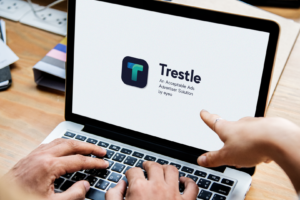Advertising has undergone significant changes in recent decades. But, without a doubt, the most impactful moment has come in the form of new data privacy laws, such as the California Consumer Privacy Act (CCPA) and its recent addendum, the California Privacy Rights Act (CPRA) in the US, which ushered in a much-needed regulatory revolution to the world of digital advertising.
Without a crystal ball, it’s impossible to see what the future holds or whether any further sweeping changes are on the horizon. But to look forward, we need to look back. To make sure we can build a better and brighter future for the entire digital ads supply chain, we as an industry must reflect on how and why we have arrived at where we are now.
In doing so, advertisers will not only be able to see the parallels between GDPR and the current state of intrusive ad formats, but also how gaining a better understanding of the motivations, browsing habits, preferences and requirements of online users can help them reach a new, extremely sought-after audience, which has been hiding in plain sight all along.
GDPR: A forced intervention?
It is no secret that GDPR and the California laws are the most significant, dividing and contested actions in the digital advertising world in recent years. Many in the industry have been (and still are) highly resistant to these new privacy laws.
Although there are still too many renegade operators in the online advertising ecosystem, the long-term impact of this new regulatory framework is clearly working in favour of online users, as evidenced by Belgian Data Protection Authority’s (DPA) recent investigation into IAB Europe’s Transparency and Consent Framework (TCF).
Yet, a key (and often overlooked) fact about this panacea in data-driven digital advertising was that it was governments which were forced to introduce these new types of data privacy laws. Why? It wasn’t through pressure from the big tech corporates. It wasn’t through an organized lobby from pressure groups.
Simply put, it was users themselves and a rising public understanding of how people’s private information is shared for advertising purposes, particularly following Cambridge Analytica, that forced governments into creating the legal framework for a more privacy-focused web ecosystem. The rise of ad blockers over the last decade is a clear testament to this rising frustration amongst users, but very little was done in the industry to address these concerns.
More users consent to receive nonintrusive ads
Fast forward to today, it is easy to draw parallels between the events that led up to the forced implementation of GDPR and the California laws and the current state of ad formats and, more specifically, user perceptions on overly intrusive ad formats.
Again, looking introspectively over the last decade, one trend has become plainly clear: the user experience has been, and continues to be, tarnished by irritating and intrusive ads. For years, online ads have become bigger, flashier and more invasive, all in the name of attempting to combat the wasted billions of dollars being pumped into standard banner advertising.
As a result, a large segment of online users now does not want invasive or disruptive ad formats, which has again led to the rising prominence of ad blockers. Yet, just as it was in the case of data privacy regulation, ad blocking in the context of overly invasive ad formats is really just a symptom of a broken user experience. Many online users clearly just want to have greater control over their online experience, especially over the ads they do or do not wish to see.
The answer is right in front of us…
If there is one thing that the digital ad industry can learn from GDPR and CCPA, it is surely that nobody is a better judge than consumers themselves over what constitutes a satisfactory online experience, which they have consented to (or, in way too many cases, have not).
While many still believe these users are unreachable, those who are willing to reflect on past mistakes will not only see the parallels between GDPR and the current state of ad formats, but also the enormous benefit in reaching previously frustrated and overlook consumers.
This is why we support the Acceptable Ads Standard and its ambition to continue to adapt and create a fairer and more profitable web for all parties in the online value exchange – advertisers, publishers and users alike.
Rather than being flashy and invasive, the formats used by Acceptable Ads are respectful and nonintrusive. For an ad to be classed as “acceptable,” it needs to follow the standards that have been set by the Acceptable Ads Committee.
Acceptable Ads
Critically, we are already seeing many in the industry recognising the benefits of Acceptable Ads. Advertisers worldwide are using Acceptable Ads to successfully deliver their messages to over 200 million users. And, importantly, the vast majority of those users have chosen not to block all ads. Providing that advertisers deliver creative ad formats that don’t negatively disrupt the browsing experience, and instead focus on creating positive experiences, the right banner ads are proven to be highly effective in boosting a brand’s perception.
This is an untrodden, ignored path for advertisers and the agencies with which they work. Putting the user first is a win-win situation, because users get to keep control and see the ad formats they find acceptable, and advertisers gain a new, and extremely sought-after audience that was hiding in plain sight. Only through understanding and recognizing past mistakes, gaining a better understanding of the motivations, browsing habits, preferences and requirements of online users, will we be able to deliver a win-win for everyone in the digital ads supply chain.


